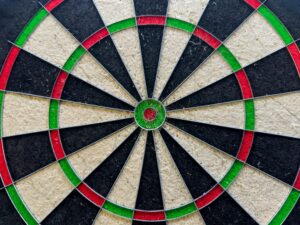Why Monetization Matters for Digital Creators
Being a digital creator is one of the fastest-growing career paths in 2025. Platforms like YouTube, TikTok, Instagram, and Substack have made it easier than ever for people to share content with the world. But creating content is only half the journey—the other half is figuring out how to monetize as a digital creator and build sustainable income streams.
Monetization not only allows you to earn money but also validates your hard work, funds better equipment, and gives you the freedom to focus more on your creative passions. The best part? There isn’t just one way to earn—there are multiple paths to explore.
1. Ad Revenue
One of the most common ways to earn as a digital creator is through ad revenue. Platforms pay creators a share of the advertising income generated by their content.
- YouTube Partner Program: Eligible creators earn from ads shown before or during their videos.
- TikTok Creator Fund & Creativity Program: TikTok pays creators based on video performance and engagement.
- Instagram Reels Play Bonus: Instagram rewards creators for high-performing reels.
Focus on consistent, high-quality content to increase views and engagement. More views = more ad revenue.
2. Brand Sponsorships and Collaborations
Brands are constantly looking for creators to promote their products. If you’ve built a loyal following, sponsorships can become a significant income stream.
- Sponsored posts: A brand pays you to feature their product in your video, blog, or social post.
- Ambassadorships: Long-term partnerships where you represent a brand over time.
- Co-created content: Collaborating with brands to create unique campaigns.
Even with a small audience, brands value engagement rates. If your community interacts actively, you can secure partnerships early on.
3. Affiliate Marketing
Affiliate marketing allows you to earn commissions by promoting products or services through unique links.
- Share product recommendations in your videos, blogs, or posts.
- When someone purchases using your link, you earn a commission.
- Popular affiliate programs:
- Amazon Associates
- ShareASale
- Commission Junction
- Individual brand programs (e.g., beauty, tech, fitness companies)
Only promote products you genuinely trust—audiences value authenticity over quick sales.
4. Selling Digital Products
Digital products are a scalable way to earn because you create them once and sell them repeatedly.
Examples include:
- E-books and guides
- Templates (Notion, Canva, Excel, etc.)
- Online courses or masterclasses
- Stock photos, music, or design assets
Example: A fitness creator can sell a “30-Day Home Workout Plan” as a downloadable PDF.
5. Offering Online Services
If you have a specialized skill, you can offer services alongside content creation.
- Coaching or consulting (e.g., business, career, health)
- Freelance services (graphic design, video editing, copywriting)
- Speaking engagements or workshops
Use your content as a portfolio to attract clients. People are more likely to hire someone whose expertise they’ve already seen in action.
6. Crowdfunding and Memberships
Your audience can directly support your work through memberships or crowdfunding platforms.
Options include:
- Patreon: Offer exclusive content, early access, or behind-the-scenes perks.
- Buy Me a Coffee: Fans donate one-time or monthly amounts.
- YouTube Memberships: Fans pay monthly to access perks like badges or private live chats.
Reward paying supporters with unique, valuable content to encourage retention.
7. Selling Merchandise
Merchandising is a great way to strengthen your personal brand while earning money.
Examples:
- Branded T-shirts, hoodies, or caps
- Mugs, stickers, or tote bags
- Niche-related products (e.g., a gamer selling custom controllers)
Start small with print-on-demand services (like Printful or Teespring) to avoid upfront costs.
8. Licensing Your Content
If your content is high-quality, other companies may want to license it. For example:
- Viral videos licensed to media outlets
- Photos licensed for stock libraries
- Music licensed for ads, TV, or YouTube creators
Always watermark your work online to protect it, and explore licensing marketplaces to showcase your content.
Best Practices for Monetizing as a Digital Creator
No matter which monetization route you choose, here are some universal strategies for success:
- Diversify income streams: Don’t rely on just one method—combine ads, sponsorships, and products.
- Prioritize authenticity: Your audience will lose trust if you promote products you don’t believe in.
- Engage your community: A loyal, engaged audience is more valuable than a large, passive one.
- Reinvest earnings: Use profits to upgrade gear, hire help, or run ads for growth.
- Think long-term: Monetization is a marathon, not a sprint. Patience and consistency pay off.
Final Thoughts
Monetization is the bridge between being a hobbyist creator and becoming a professional one. Whether you choose ad revenue, sponsorships, affiliate marketing, or digital products, there’s no single “right” path. The best approach is to start with one strategy, test it, and expand into others as you grow.
The creator economy is booming, and the opportunities are endless. If you’ve been wondering how to monetize as a digital creator, the key is simple: start creating, build trust with your audience, and explore income streams that align with your brand.
Your creativity has value. It’s time to turn it into a career.


